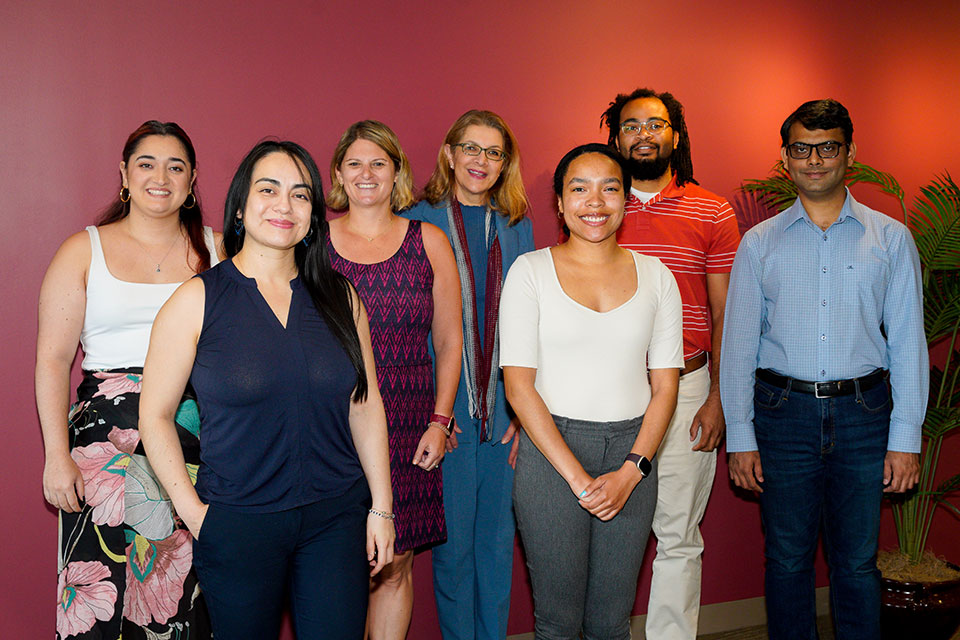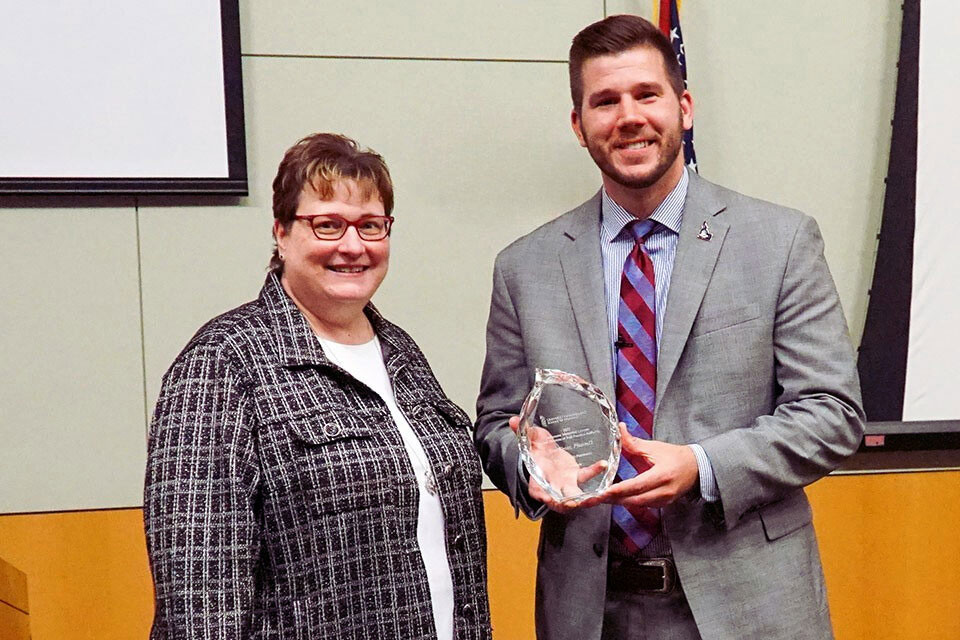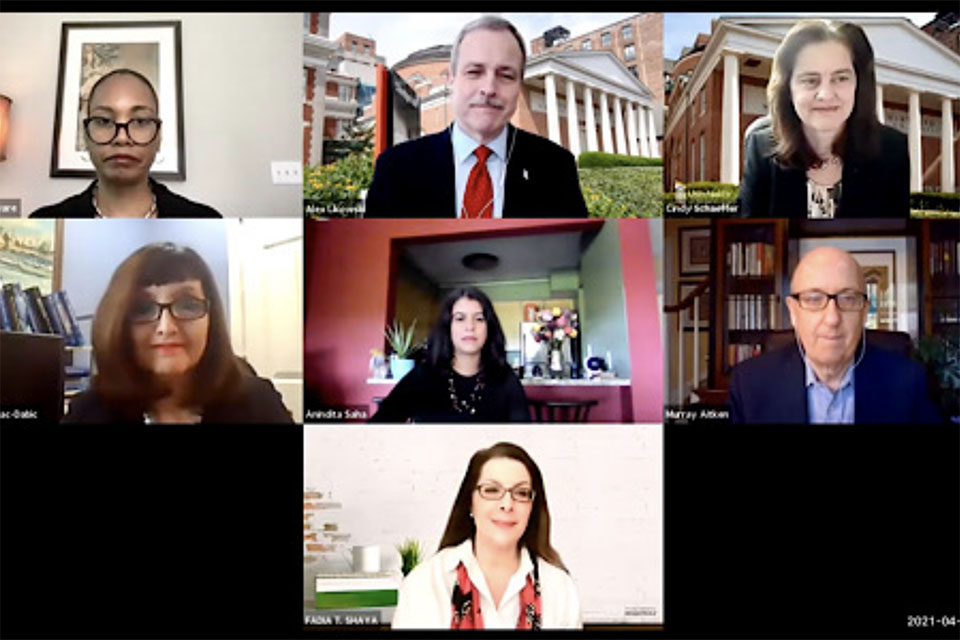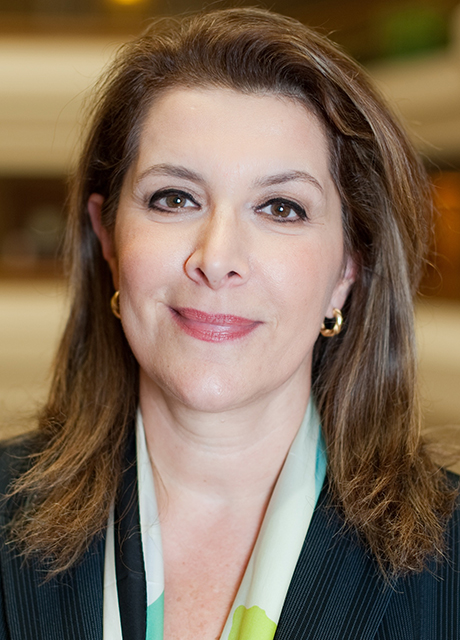A Welcome Boost from the BHRT Program @UMSOP
The Behavioral Health Resources and Technical Assistance Program drives data and substance solutions.

By Joseph Cantlupe, as published in Capsule, Summer 2025
September 16, 2025
To help prevent and reduce substance use — especially among young people — communities, organizations, providers, and others in the health care field sometimes need that extra boost to understand how they identify those at risk and prevent negative outcomes.
With a precision population health approach, the University of Maryland School of Pharmacy’s Behavioral Health Resources and Technical Assistance (BHRT) Program provides that boost, using data-driven practices to understand and evaluate why people are misusing substances.
The questions are many. Are young people taking illicit opioids or misusing prescription medications? Are their interests outside school or what’s happening in their family life driving them to this? Are providers fully aware of the impact of drugs they prescribe? And should communities provide more specific education about certain types of drugs?
“We don’t just study these issues on paper, we step out from behind our computer screens and actively engage with public health departments and various stakeholders, working closely with them,” says BHRT Executive Director Fadia Shaya, PhD, MPH, a professor in the Department of Practice, Sciences, and Health Outcomes Research (P-SHOR) at the School of Pharmacy. “Patterns of drug use are heavily influenced by the environment, education level, and employment status of the population.”
In essence, BHRT uses innovation and technology to move from data to action, and Shaya’s team has sought to perfect the science of dissemination and implementation.
Waving Red Flags
Working with federal and state governments, BHRT helps pharmacists, dentists, physicians, and other providers properly evaluate prescribed and over-the-counter medications to identify red flags for misuse. BHRT’s experts address substance use and behavioral health issues, as well as social determinants of health, across all 24 Maryland jurisdictions, with a mission to provide support and solutions.
“Our solutions are anchored in the profile and dynamics of a community,” adds Shaya, who was the University of Maryland, Baltimore (UMB) Founders Week Teacher of the Year in 2017 and now is a UMB Distinguished Professor and an MPower Professor. “A large part of what we do is stakeholder engagement to better understand the ecosystem, from providers, to regulators, to health systems, and payers.”
It’s an approach that Lester Davis, vice president and chief of staff at CareFirst BlueCross BlueShield, applauds.
“Our mission is to serve the community and meet them where they are, providing services that match their needs, at the right place at the right time,” Davis says. “We spend a lot of time analyzing trends — both historical and current — to help guide and inform our partnerships and investments. We are always happy to be engaged with thoughtful partners [like BHRT].”
BHRT offers technical guidance to assist communities in thwarting drug misuse or alcohol abuse. These actions range from providing one-page fact sheets on issues such as cannabis use to interactive epidemiological tables showing patterns of use. The fact sheets might include census data specific to the jurisdiction or other records that detail drug usage among groups in the jurisdiction’s neighborhoods.
The BHRT team of about 10 members also compiles complimentary educational outreach materials for providers to support prescribing decisions based on the latest evidence-based statistics. In addition, the team helps local health departments implement programs. Team members are adept at working with organizations to identify effective strategies, use focus groups, and help people more easily “visualize” reams of important data.
‘Ear to the Ground’
Thanks to its efforts, BHRT receives nearly $1 million in grants and contracts annually, according to Shaya.
“We work to understand the needs within communities by keeping our ear to the ground,” she says. “We assess these needs through quantitative and qualitative data collections and key informant interviews, which vary significantly from Baltimore City to Caroline County to Prince George’s County. We then collaborate with the jurisdictions to help them build capacity and understand the tools they need to engage with schools, families, and organizations.”
In its role as technical assistance provider for all the jurisdictions it serves, the BHRT team provides support for a variety of prevention programs. Jurisdictions across the state, assisted by BHRT in planning and strategic development, are currently implementing preventive education programs for youth and families, safe storage and disposal initiatives, naloxone distributions, the Maryland Opioid Academic Detailing Program, compliance checks and Responsible Beverage Service trainings, and increasing capacity and community mobilizing.
BHRT collaborates closely with the Maryland Department of Health’s Prescription Drug Monitoring Program, which offers free educational outreach for medical providers. It provides evidence-based recommendations, especially for opioid prescribing, aiming to increase prescribers’ and pharmacists’ adherence to these recommendations for opioid safety. BHRT provides technical assistance and evaluation support to develop these strategies.
“I believe we have evidence showing that by addressing policy related factors, we can impact the entire community,” Shaya adds. “Providing answers, where people live, has significant policy implications.”
Ana Lazarides, director of Maryland’s Prescription Drug Monitoring Program, agrees, saying, “We strongly promote the use of the Prescription Drug Monitoring Program to help health care providers make informed clinical decisions when prescribing controlled substances. Whether it’s a pediatrician, prescriber, pharmacist, or dentist, we equip them with the knowledge and skills to recognize potential warning signs of substance use or misuse.
“We analyze our data and collaborate with the BHRT team to identify these warning signs. From this analysis, we educate providers on best practices, particularly in prescribing patterns and how we prescribe to different groups,” Lazarides says.
The BHRT team collaborates with the Prescription Drug Monitoring Program to develop various medical educational materials, as part of the Maryland Opioid Academic Detailing Program. Essentially, academic detailing helps “prescribers understand opioid misuse and engage more effectively with patients,” says Adrian Catwell, a health policy analyst and provider outreach coordinator for the state. One of their newer programs is a pediatrician working group that addresses opioid prescribing for the young population to “reduce unsafe or inappropriate” prescribing, he says.
Working with BHRT, “we paint a picture of what’s going on in the county, providing a snapshot with powerful illustrative tools,” says Catwell. “The goal is to change the mindset, encourage behavioral change, and help prescribers make informed clinical decisions.” Communities often conduct surveys to evaluate drug issues within the population they serve. These surveys are detailed and provide answers that help teams address specific problems. For instance, a survey on opioids may examine patients’ access to prescription and nonprescription opioids via friends, family members, and prescribers.
Deep Dive for Data
Nicole Sealfon, MPH, associate director of BHRT, explains that the team works closely with physicians, health departments, and community groups to develop data collection tools to measure outcomes and the impact of substance use prevention programs. In some instances, the planning may not be a good fit, so they readjust.
“We help organizations implement the plans, and if they hit a roadblock or the plan wasn’t a good fit, we make necessary adjustments,” she says. “We help providers, pharmacists, and others visualize data they have collected, displaying what’s happening in terms of needs assessment, support, or outcomes. We provide tools, tip sheets, and guidance documents. We’re not directly in the patient community, but are only one or two steps removed, depending on the grant.”
A crucial element of BHRT assignments is evaluating data in different communities to understand the impact of substance use and help officials carry out preventive measures.
One example is Project Upstream, part of a five-year initiative known as the Strategic Prevention Framework-Partnership for Success program, funded by the Substance Abuse and Mental Health Services Administration (SAMHSA). This grant program identified Carroll and Anne Arundel counties as the focus for implementing the grant activities.
BHRT facilitates the administrative component and guides the implementation of activities conducted by its partners. For example, the team has designed a comprehensive guidebook, and the data is inputted and analyzed. BHRT then translates that data into more digestible formats — such as creating various infographics in colorful and concise terms.
Carroll County, Md., like other areas of the country, is home to teens trying to find their way, with some struggling with mental health and substance use.
BHRT is collaborating with the Carroll County Health Department and the Boys and Girls Clubs of Carroll County to implement a Resiliency Program where the county offers structured programs to help middle and high school students avoid mental health struggles or other situations linked to alcohol, tobacco, and illegal drug use. Data shows that more than 48 percent of Carroll County middle school students reported their mental health “was sometimes, most of the time, or not always good the past 30 days,” and nearly 34 percent of high school students felt the same. BHRT created surveys to better understand the needs of the youths, and the county initiated extracurricular programs ranging from knitting to video games as a result.
“A few jurisdictions have youth-led initiatives that are similar to Carroll County in that they are learning skills, which are a benefit/protective factor while they also gain peer and community support,” Sealfon says. For instance, “Montgomery County has had success growing their youth coalition.”
Evolving Assistance
Similar infographic reports have been made for Anne Arundel County in Project Upstream, highlighting the impacts of substance use and the importance of preventive measures to reduce substance use. Under the SAMHSA grant, the county is implementing Strengthening Families, a prevention education program through which parents and youths attend weekly classes to enhance their skills to improve family dynamics.
All these projects, advocates say, continually evolve and are improved. For instance, the state Prescription Drug Monitoring Program continually examines and revamps its website to update providers and pharmacists, says Lazarides.
“One of the biggest challenges was ensuring that all prescribers knew the importance of how to use the Prescription Drug Monitoring Program,” she says. “We create training videos because providers have very limited time to do research and figure things out, so we make sure they get information as quickly as possible.”
Jill Morgan, PharmD, BCPS, BCPPS, FNAP, professor and chair of P-SHOR, says: “Any effort to enhance knowledge in population health and medication safety ultimately leads to better individual patient care. Fadia Shaya brings the passion, expertise, and skills needed to lead this work.”
Whether it’s state, federal or local programs, the Behavioral Health Resources and Technical Assistance Program’s “work is very relevant in managing the optimal flow of medications so that we optimize health care,” Shaya says.
“It’s very important to have proper channels of dissemination of information, and efficient implementation that are scientifically sound,” she adds. “We have the tools and the technologies to reach people. Our next step is to leverage AI tools to accelerate the implementation and dissemination of prevention strategies.”
View the full Summer 2025 edition of Capsule.



